Here's a thorough look into the technology powering Magic Leap's mysterious 'mixed reality' headset
The Google Glass look.

Watch out for that giant robot!

The second drawing is all about representing how Magic Leap's headset will work. The person wearing the headset sees the giant robot and the floating bee character, but no one else does. The headset is "augmenting" the wearer's reality by adding a massive robot statue and a bizarrely human bee.
An example of what Magic Leap doesn't want to make.
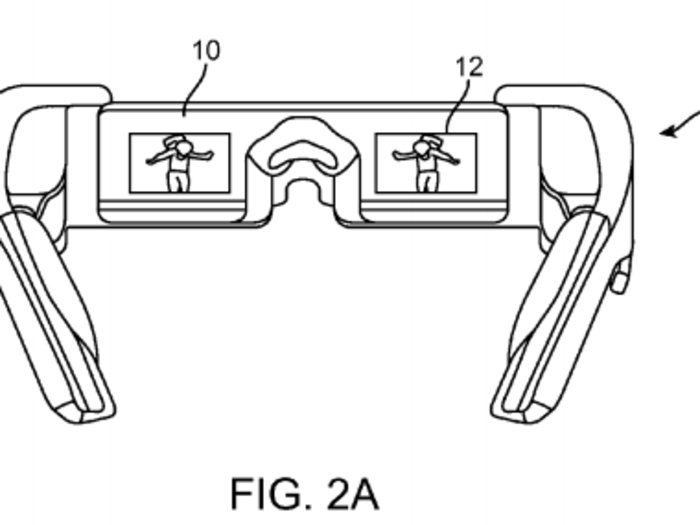
In the third drawing, a headset is shown with two displays intended to trick the eyes. This is essentially how virtual reality headsets work.
Magic Leap president Rony Abovitz has repeatedly stated his disinterest in this type of solution. That's evident in the drawing's description from the patent: "Such configurations have been found to be uncomfortable for many users due to a mismatch between vergence [how eyes turn] and accommodation which must be overcome to perceive the images in three dimensions."
All that to say this is most certainly not Magic Leap's solution.
The camera eyes approach.
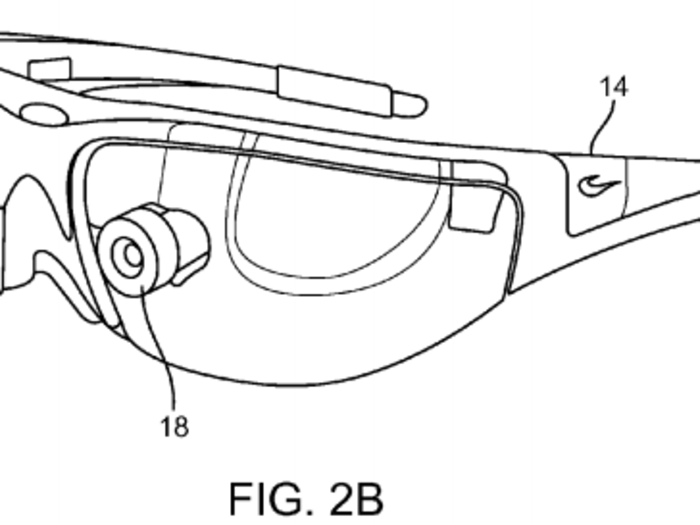
Another solution shown in Magic Leap's patent application is this set of glasses with cameras mounted in front of where you'd normally look. The idea here is that the cameras capture the world in front of the user, add in some form of computer-generated images, and push out that augmented video to the user on the side of the lenses facing the user's eyes.
As the patent application points out, "The position of the cameras and displays generally blocks the natural field of view of the user when the glasses are mounted on the user's head."
Again, this is not Magic Leap's solution.
The hat/helmet model.
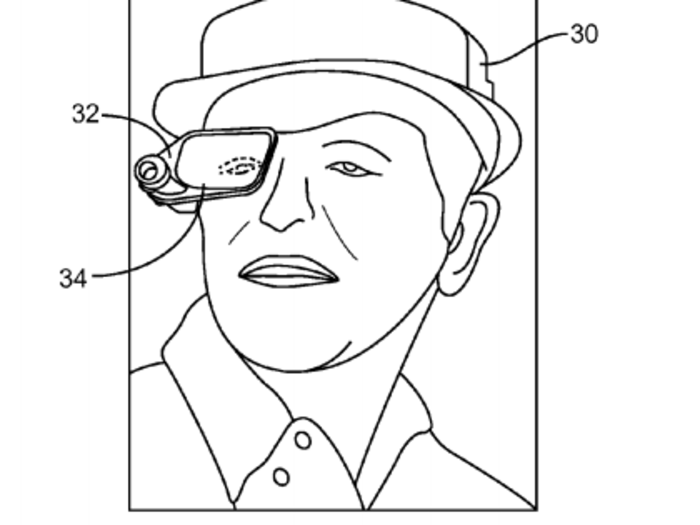
Perhaps you don't want to wear a pair of sunglasses. What you really want is a hat or helmet with an attached display, right? Who could blame you!
All joking aside, this is yet another representation of how augmented reality can be achieved, albeit one that Magic Leap likely isn't pursuing. This looks oddly like a device that already exists, actually – as SlashGear's Chris Davies pointed out to me on Twitter, the Vuzix M2000AR is strikingly similar.
The Robert Scoble in the shower model.
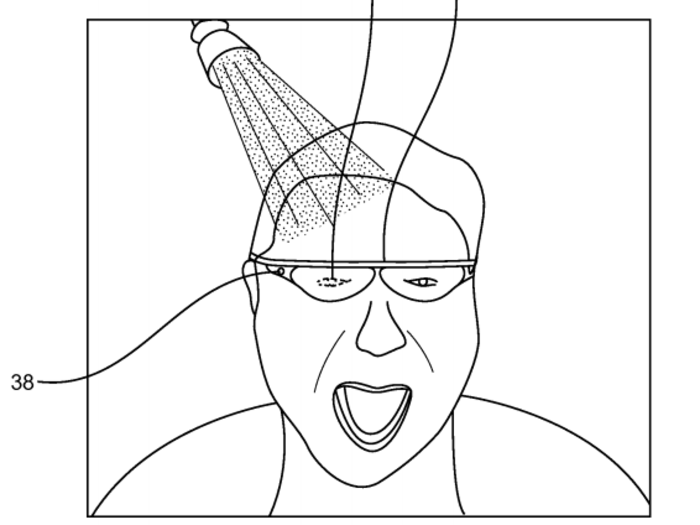
Apparently the folks in Magic Leap's patent application department have a sense of humor.
While this image is meant to represent "a frame couple-able to a user's head in a manner similar to eyeglasses coupling so that a visualization module may be utilized to capture images and also present monocular augmented digital imagery to a user through a small display," it's really just a reference to a picture taken by Rackspace employee and former Microsoft evangelist Robert Scoble.
Here's that picture of Robert Scoble, which has him in a shower wearing Google Glass.
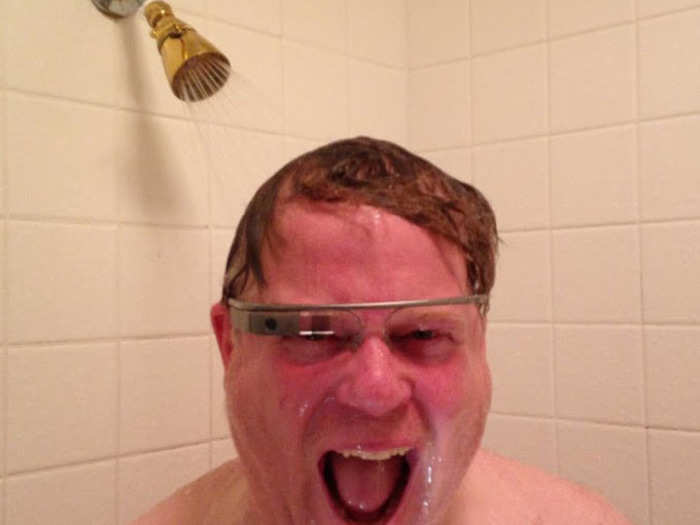
This is where we finally start getting more information on what Magic Leap's making.
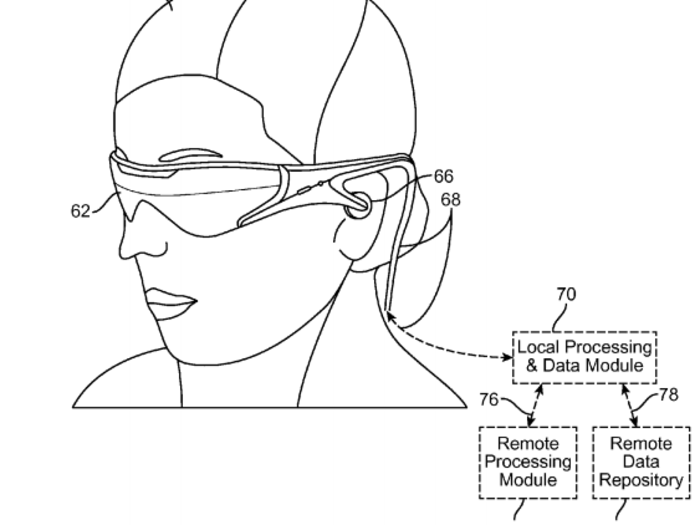
Is the sunglasses setup going to be Magic Leap's first product? We're guessing probably not. But what is very likely to come with Magic Leap's first product is a "local processing & data module" – or, more clearly, some form of pocket computer that powers the headset. See that wire leading off the back of the glasses? That connects to the pocket computer.
What, you thought all the processing would be done in the glasses? We're in the future, yes, but not quite that far into the future.
The helmet returns.
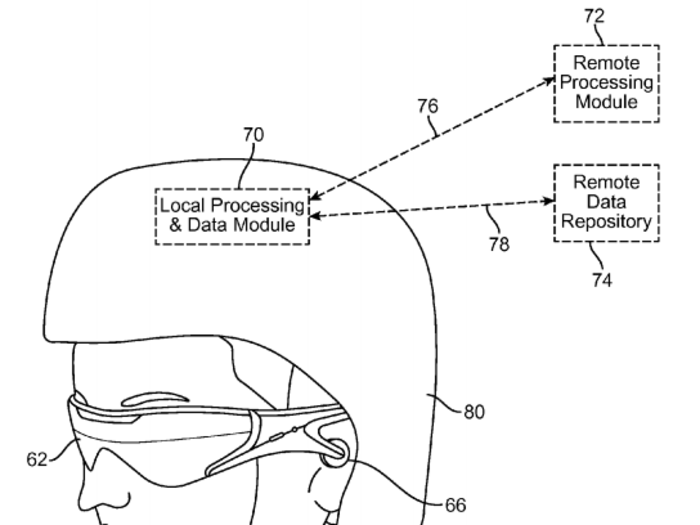
Sure, Magic Leap could use a helmet to house the processor required to run its headset, but that seems very unlikely.
The interesting addition in this drawing is that the local processing (the pocket computer) seemingly communicates remotely with both a "data repository" (think: the cloud) and a "processing module." That means that Magic Leap's headset could both store data elsewhere (your photos, for instance) and could offload some of the processing to a remote computer.
This illustration further spells out how Magic Leap's headset works.
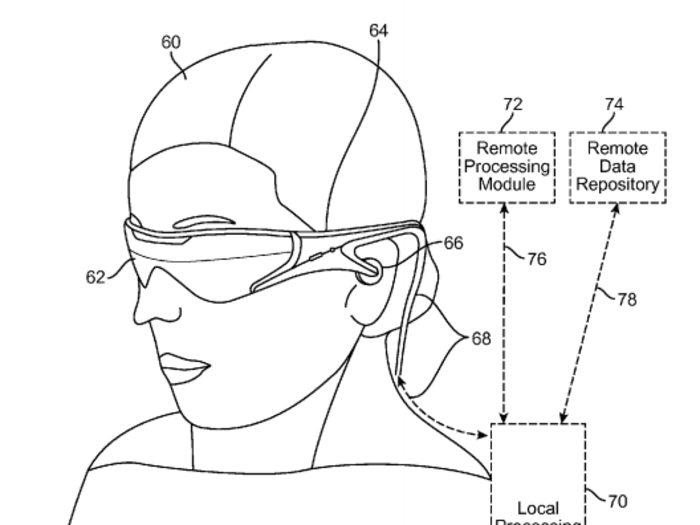
To further elucidate the concept of both local and remote processing, this is how the headset may work with both local processing (the aforementioned pocket computer) and remote processing and data storage.
The belt clipped computer.
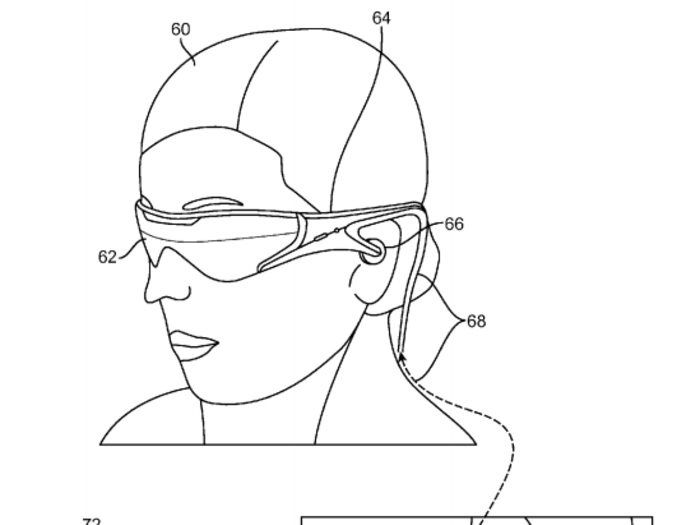
Not so into putting computers in your pocket? Sorry to tell you, but you've already got a smartphone in there and it's more computer than phone.
But perhaps you've managed to get by without a smartphone and, if you need to keep one, you have a sweet belt clip? Magic Leap's potential solution for local processing is the sweet belt clip computer you see in the drawing here.
What Magic Leap is saying.

We asked Magic Leap for statements about what the company is working on and were rebuffed. The most we got from a company rep was this: "Our product will be mobile and will not require plugging into a computer."
That's an important distinction from the likes of Facebook's Oculus Rift virtual reality headset (which requires a wired connection to a powerful computer). It's more akin to something like Google's Glass headset (which is a type of AR), or Samsung and Oculus VR's "Gear VR" headset (which uses your phone and requires no wires or computers).
The company's website says little more about Magic Leap's intentions. The jobs page lists lots of expected positions (optics, programming, etc.), but also has some interesting positions for an "Android developer" (which tells us that the headset is likely to be powered by a smartphone-esque computer) and a variety of positions for cloud developers (adding credence to our guesses about how the headset is handling data storage).
There are also positions listed for "telephony" and a couple of jobs in the health care department. If nothing else, Magic Leap is taking a very broad approach to what it wants to deliver.
Now all that's left is actually showing that product.
Magic Leap's promotional video, released in March 2015, was apparently months old when it was shown.

For now, there's a promotional video from Magic Leap that offers a demonstration of what the company's headset might do. Try to restrain your excitement until more than one person outside of Magic Leap has had a chance to use it.
http://www.youtube.com/embed/kPMHcanq0xM
Width: 800px
Height: 450px
And on April 19, 2016, Magic Leap released a new video showcasing its technology. Check it out right here!

http://www.youtube.com/embed/GmdXJy_IdNw
Width: 800px
Height: 450px
Popular Right Now
Popular Keywords
- India’s wearables market decline
- Vivo V40 Pro vs OnePlus 12R
- Nothing Phone (2a) Plus vs OnePlus Nord 4
- Upcoming smartphones launching in August
- Nothing Phone (2a) review
- Current Location in Google
- Hide Whatsapp Messages
- Phone is hacked or not
- Whatsapp Deleted Messages
- Download photos from Whatsapp
- Instagram Messages
- How to lock facebook profile
- Android 14
- Unfollowed on Instagram
Advertisement